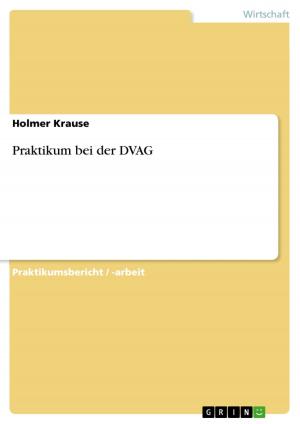The Hama Massacre - reasons, supporters of the rebellion, consequences
Nonfiction, Social & Cultural Studies, Political Science, International, International Relations| Author: | Kathrin Nina Wiedl | ISBN: | 9783638567701 |
| Publisher: | GRIN Verlag | Publication: | November 10, 2006 |
| Imprint: | GRIN Verlag | Language: | English |
| Author: | Kathrin Nina Wiedl |
| ISBN: | 9783638567701 |
| Publisher: | GRIN Verlag |
| Publication: | November 10, 2006 |
| Imprint: | GRIN Verlag |
| Language: | English |
Seminar paper from the year 2006 in the subject Politics - International Politics - Region: Near East, Near Orient, grade: 1, Ben Gurion University (Middle East Sciences), course: Israel and Arabs - between war and peace, 76 entries in the bibliography, language: English, abstract: In February 1982, the Syrian city of Hama became well-known worldwide as the place of the 'Hama massacre'. After a large and long-planned uprising of Muslim rebels against Asad and the Ba'th party, mainly organised by the Syrian Muslim Brotherhood, Syrian government forces crushed the rebellion with brutal force. An estimated number of 20.000 to 40.000 citizens were killed by Syrian army units under the control of General Ali Haydar, 15.000 missing persons have not been found until today. This incident evoked heavy condemnation of the so-called 'pro-Moscow military regime' of Asad in the German press. It was accused of 'beeing one of the bloodiest regimes in the Middle East, shaken from fear of espionage and with pro-soviet declarations and refusal of any peace policy overbidding itself every day anew.' (Ranke, P.M., 'Nur noch mit Gewalt', Die Welt, 12.2.1982). The Asad regime was portrayed in West German newspapers in exactly the same way as in the writings of the Muslim Brotherhood, as a sectarian minority regime, and little distinction was made between the goals of the Brotherhood and the goals of the Syrian people in general. This paper analyses the reasons, supporters and consequences of the Hama massacre, focussing on the triangle between Asad, the Muslim Brotherhood and West Germany. I will analyse, why the Muslim Brotherhood in exile acted mainly from West Germany in its fight against Asad, and why West Germany supported or tolerated those actions. I will furthermore analyse the interests of different groups and countries, internal, regional and international, involved in the Hama incident - and elaborate why they were interested in a destabilisation of Syria. On a global level, I will consider the Hama incident in terms of cold war and the involvement of the Superpowers USA and USSR in the Middle East in the early 1980s.
Seminar paper from the year 2006 in the subject Politics - International Politics - Region: Near East, Near Orient, grade: 1, Ben Gurion University (Middle East Sciences), course: Israel and Arabs - between war and peace, 76 entries in the bibliography, language: English, abstract: In February 1982, the Syrian city of Hama became well-known worldwide as the place of the 'Hama massacre'. After a large and long-planned uprising of Muslim rebels against Asad and the Ba'th party, mainly organised by the Syrian Muslim Brotherhood, Syrian government forces crushed the rebellion with brutal force. An estimated number of 20.000 to 40.000 citizens were killed by Syrian army units under the control of General Ali Haydar, 15.000 missing persons have not been found until today. This incident evoked heavy condemnation of the so-called 'pro-Moscow military regime' of Asad in the German press. It was accused of 'beeing one of the bloodiest regimes in the Middle East, shaken from fear of espionage and with pro-soviet declarations and refusal of any peace policy overbidding itself every day anew.' (Ranke, P.M., 'Nur noch mit Gewalt', Die Welt, 12.2.1982). The Asad regime was portrayed in West German newspapers in exactly the same way as in the writings of the Muslim Brotherhood, as a sectarian minority regime, and little distinction was made between the goals of the Brotherhood and the goals of the Syrian people in general. This paper analyses the reasons, supporters and consequences of the Hama massacre, focussing on the triangle between Asad, the Muslim Brotherhood and West Germany. I will analyse, why the Muslim Brotherhood in exile acted mainly from West Germany in its fight against Asad, and why West Germany supported or tolerated those actions. I will furthermore analyse the interests of different groups and countries, internal, regional and international, involved in the Hama incident - and elaborate why they were interested in a destabilisation of Syria. On a global level, I will consider the Hama incident in terms of cold war and the involvement of the Superpowers USA and USSR in the Middle East in the early 1980s.















